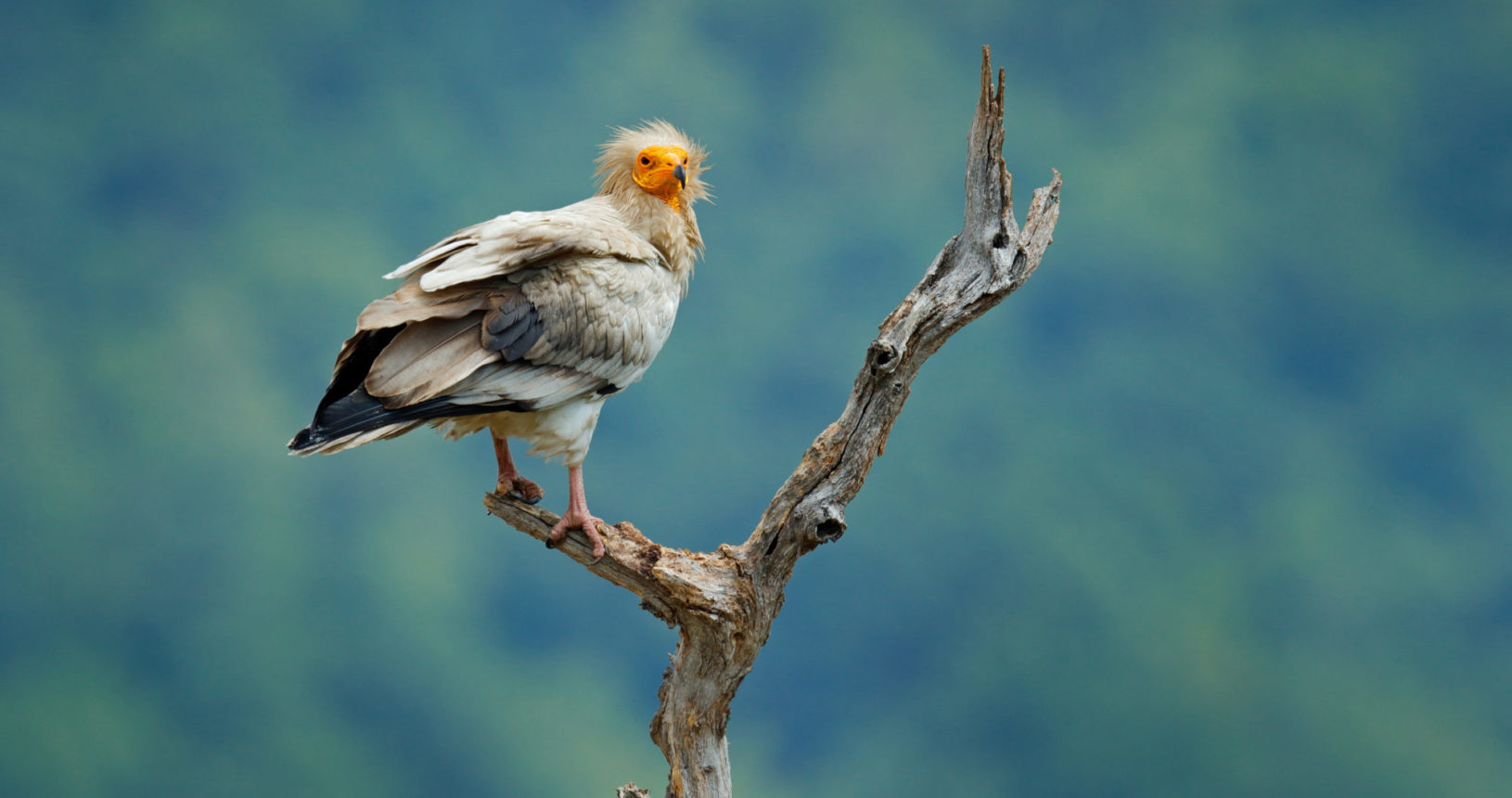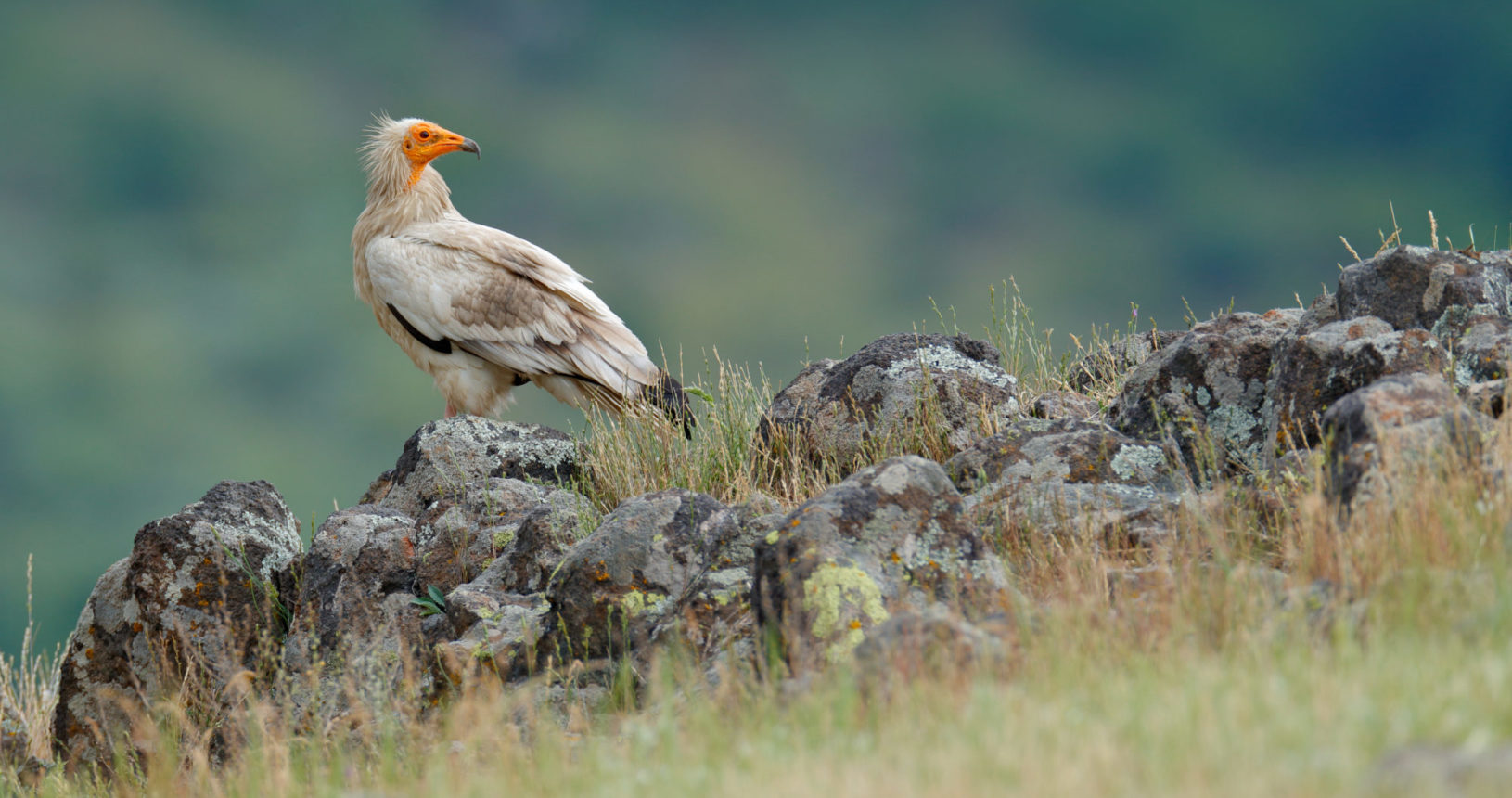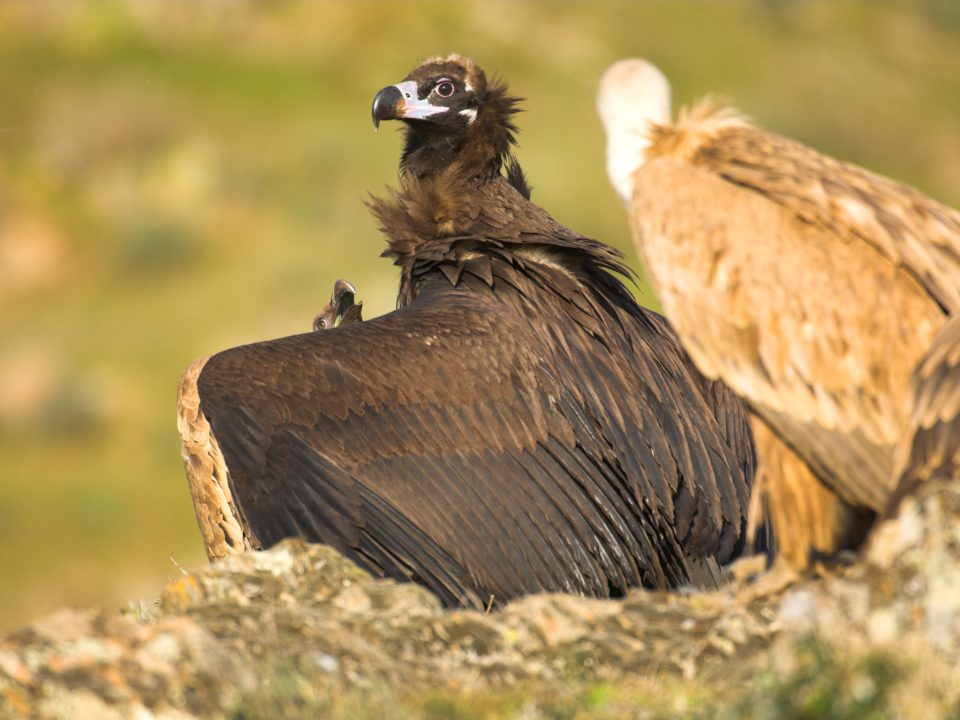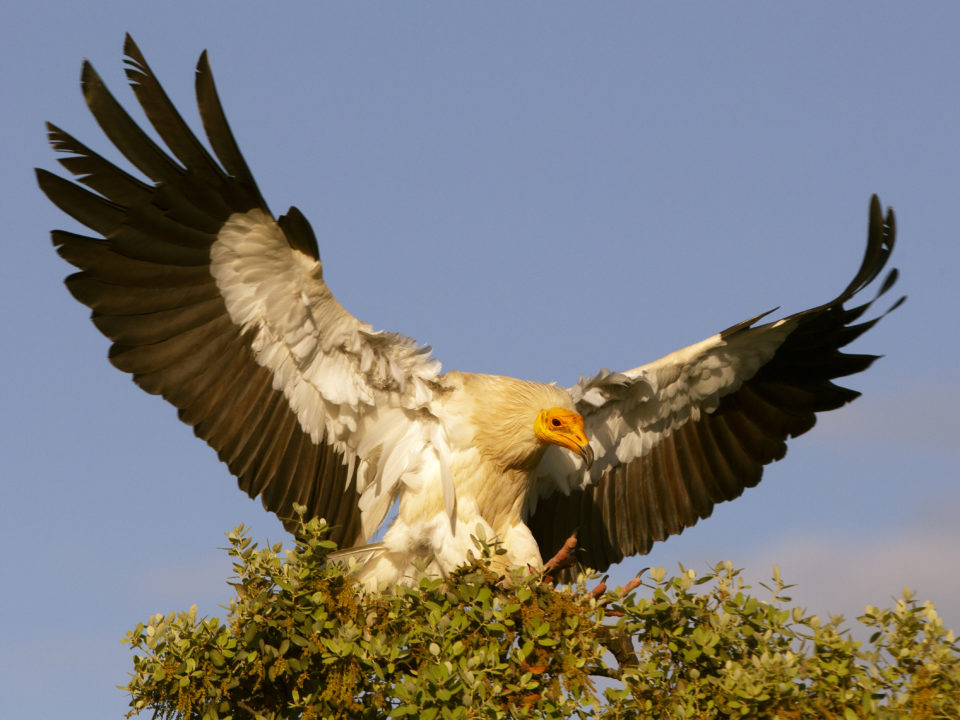Egyptian Vulture
Category: Raptors
Wingspan: 155-180 cm
Top speed: 70 km/h
Conservation Status: Endangered
The Egyptian Vulture is one of the few bird species to use tools, using pebbles to hammer open eggs as large as an Ostrich’s. It is celebrated in the folklore of many cultures, having been admired throughout history for its intelligence, striking yellow face and white plumage.
The ancient Egyptians worshipped it as a symbol of the goddess Isis and immortalised its silhouette as a hieroglyph in their writing. But the sacred bird of the Pharaohs now faces extinction.
The Egyptian Vulture is Europe’s only long-distance migratory vulture. Flying up to 640 km per day, it can travel 5000 km when migrating between its European breeding sites and its wintering grounds at the southern edge of the Sahara.
On this epic journey across three continents, the Egyptian Vulture meets one danger after another. Those that escape being electrocuted by powerlines or poisoned by lethal farming chemicals may still fall victim to illegal shooting. The European population alone has fallen by up to 50% in the last 50 years, and the Balkan population has decreased by 80% in the last 30 years.
Illegal wildlife trafficking is also a big problem. In the Balkans – where only 70 pairs of Egyptian Vultures remain – young chicks and eggs are stolen from some of the most important breeding sites on the African-Eurasian flyway. Older birds are illegally poached and stuffed as ‘trophies’ for sale on the Western European black market.
For more information on the legislation covering this species, as well as maps and research, check out: http://datazone.birdlife.org/species/factsheet/egyptian-vulture-neophron-percnopterus
Threats
- Illegal shooting
- Poisoning







